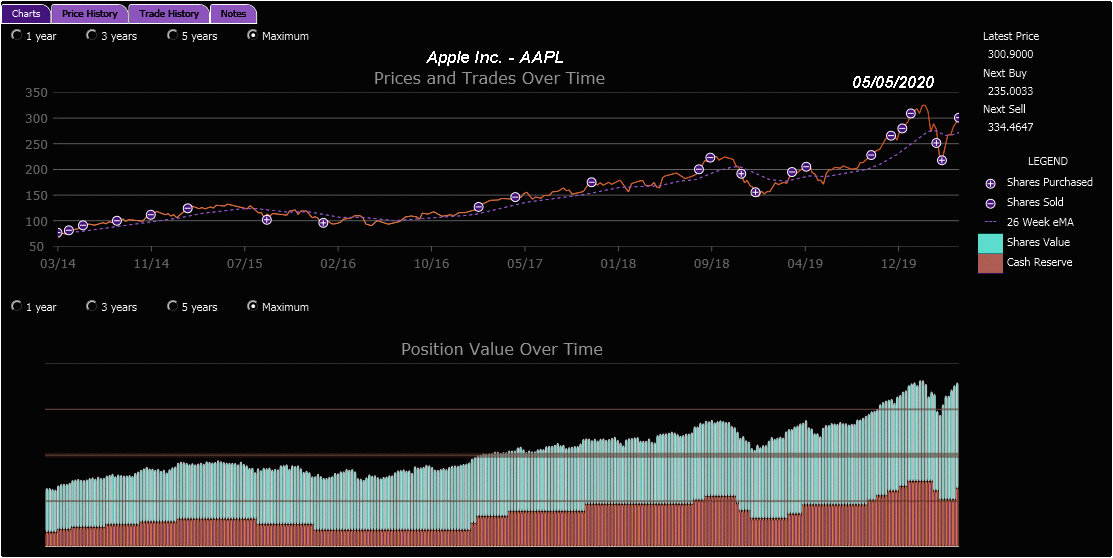Hello Jack, Re: 30 Day Rule..................
I only apply the 30 day rule to sequential buys. At the end of the 30 day hold period (T-1) I'll buy again if AIM's conditions are still satisfied for further buying. Then I set a new 30 day delay clock, Etc. If at T-1 AIM is no longer asking for a sequential buy, the T-1 Clock is still cancelled. So, if a week later the price falls enough to satisfy AIM's buy conditions then I'll execute a buy, set a new T-1 Delay Clock and again wait 30 days.
I'll take a sale pretty much any time AIM tells me its conditions are satisfied. However, for the better part of 25 years I've been using a sales delay tactic when the current cash level is already equal to the MRI or v-Wave suggested cash recommendation. It's been called a 'vealie' for years. What happens is when AIM suggests selling at least the minimum amount and I already have adequate cash on hand according to the MRI I do a 'vealie.' It consists of taking the value of the Sell Market Order and dividing it by 2 and adding that amount to the Portfolio Control. That has the effect of raising both the next buy and sell target prices a small amount. It's usually enough to get rid of the Sell Market Order temporarily. Then if the price/share continues to rise, I'll re-evaluate at the next AIM suggested Sell Market Order. If cash is still meeting the MRI's suggested level. I'll repeat the 'vealie.' I'll do so until either the cash has been diluted enough by share value growth to justify a sale (cash is below MRI suggested amount) or the MRI has gone up and now there's room for another sale to bring the cash up to the new MRI level.
Here's my AAPL holding since early in 2014:

In this period I've had 20 AIM Sells, 7 AIM Buys and 12 'vealies." Those vealies increased the Portfolio Control significantly over the years and allowed more of the holding to remain at risk and growing when the Cash Reserve level was already adequate for market risk conditions. Overall performance was improved by this action.
Cash Reserve has remained mostly adequate over the life of the AIM engine's work. Growth has been enhanced by delaying what would have been several extra sales of shares over extended bullish periods. Also, as the 'vealie' raises both the next Sell and next Buy targets, over the years it's made it easier for AIM to buy back shares just as Selling would have done.
In this case, the MRI acts as a governor to keep the AIM engine from building up cash to an inappropriate level and hurting overall performance.
Mr. Lichello suggested to not trade any more often (selling or buying) than once in 30 days. He said that would probably be enough and he didn't want to work all that hard at his AIM activity. One can model AIM with 30 days, 15 days and even weekly allowed trading and for one stock it will be better to trade more often while another one would do better with 30 days. As you can see by the AAPL history I've averaged far less than one trade every 30 days. I've averaged 0.375 Trades/Month over 6 years or roughly one trade every 3 months. Trading, especially on the Buy side seems to cluster. On the Sell side it is more trend following. The sales shown are interspersed with 'vealies' along the way. I'll see if I can mark up a graph to show this.
Sorry for the long-ish answer. Hope this helps,
OAG Tom |





